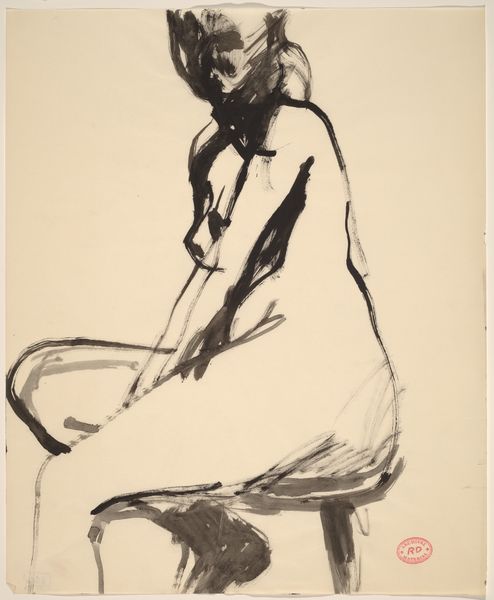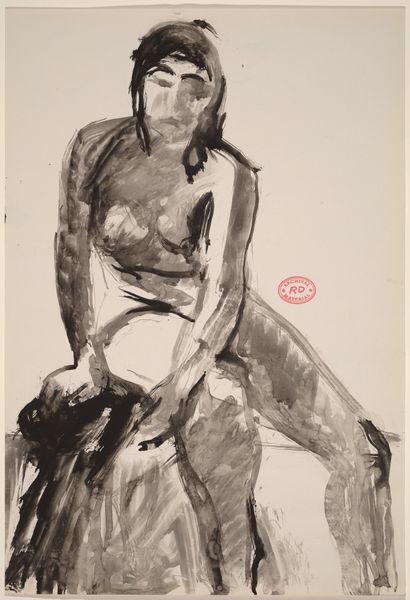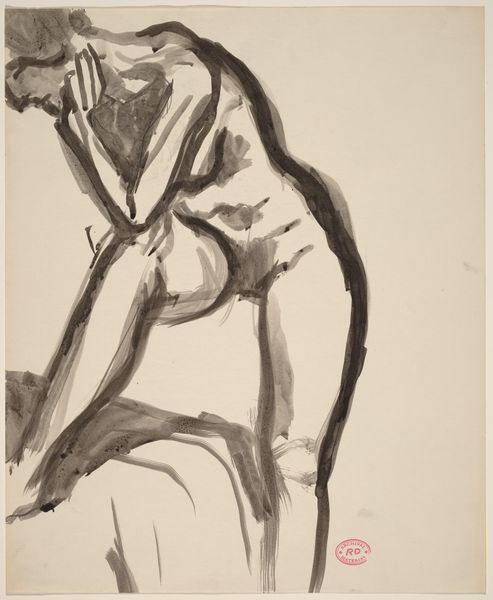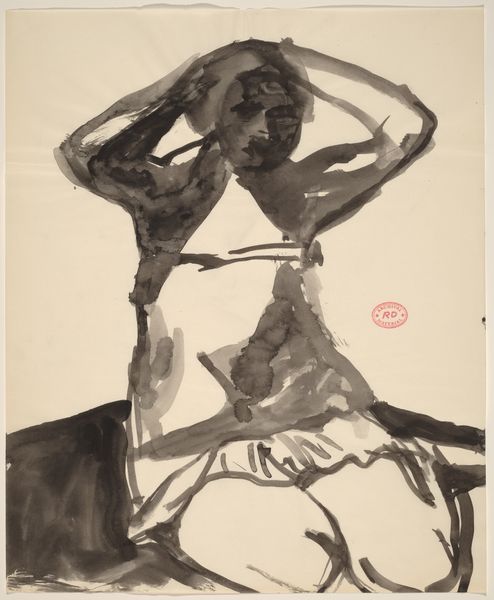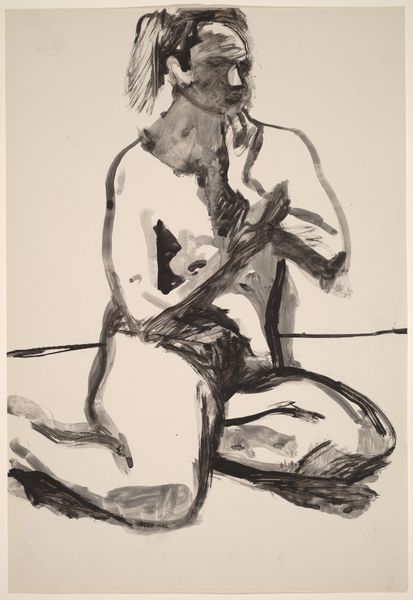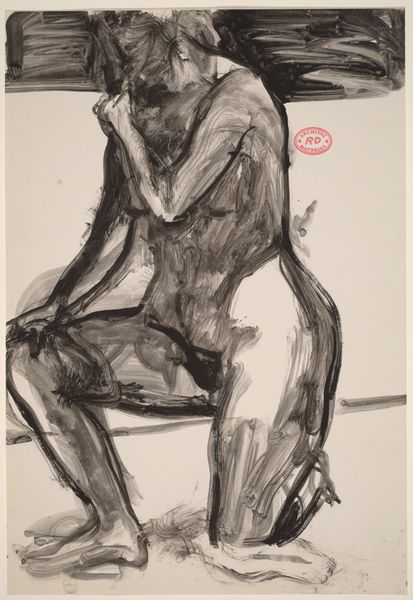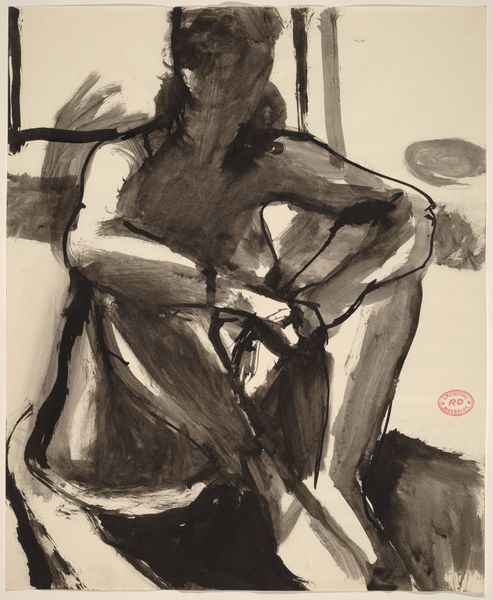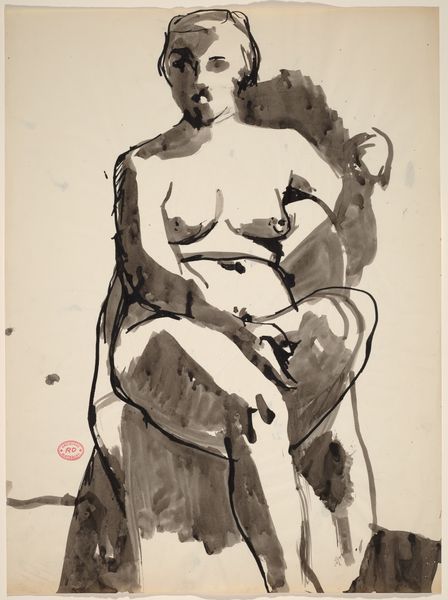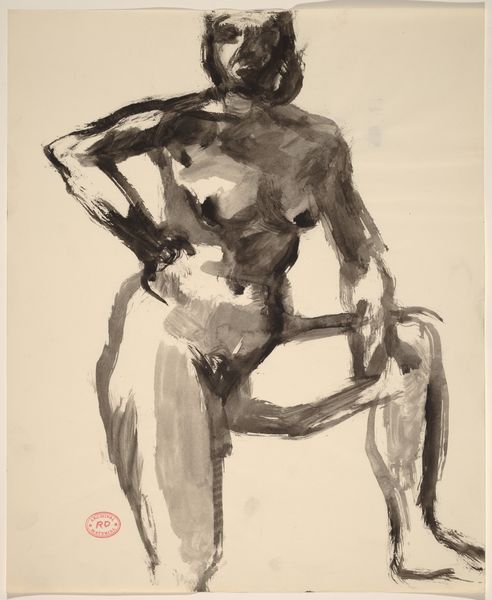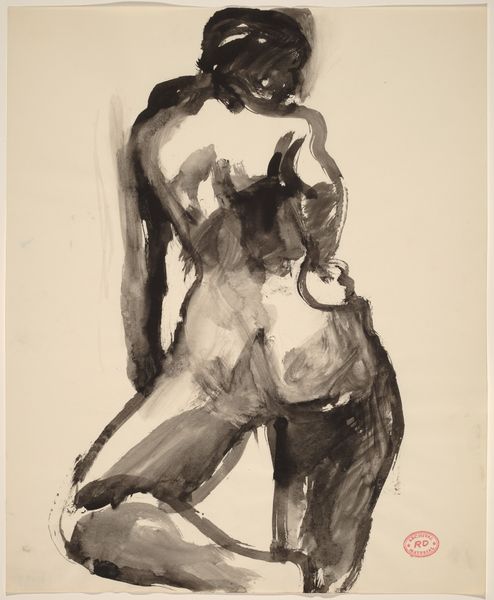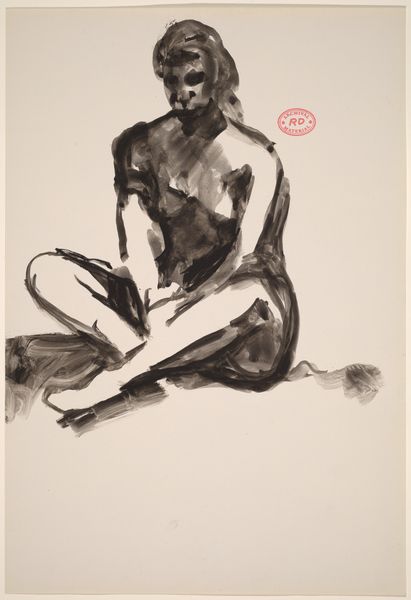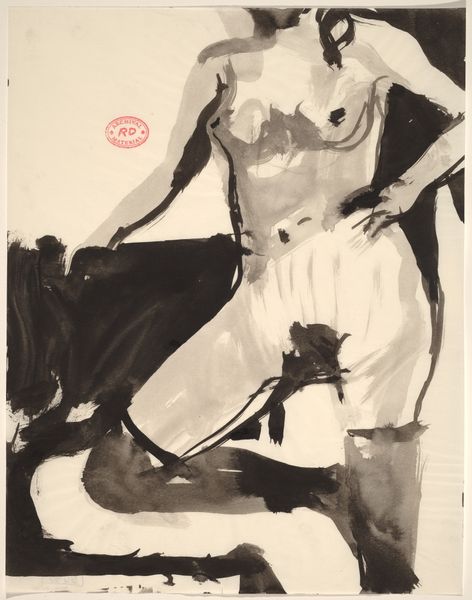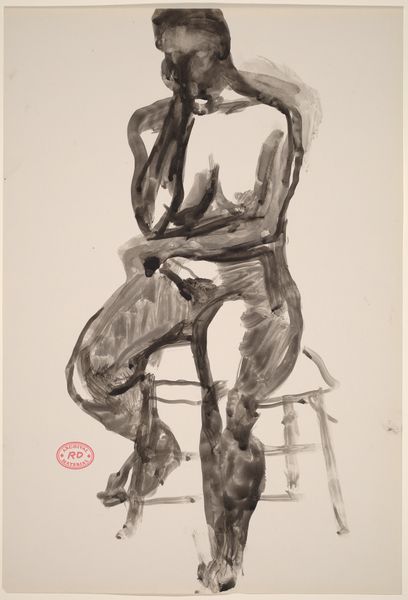![Untitled [seated woman] by Richard Diebenkorn](/_next/image?url=https%3A%2F%2Fd2w8kbdekdi1gv.cloudfront.net%2FeyJidWNrZXQiOiAiYXJ0ZXJhLWltYWdlcy1idWNrZXQiLCAia2V5IjogImFydHdvcmtzL2MwNTYwMzVlLWY0NzYtNGZkOS1hZTVhLWZiZDY1NzliNzkwYy9jMDU2MDM1ZS1mNDc2LTRmZDktYWU1YS1mYmQ2NTc5Yjc5MGNfZnVsbC5qcGciLCAiZWRpdHMiOiB7InJlc2l6ZSI6IHsid2lkdGgiOiAxOTIwLCAiaGVpZ2h0IjogMTkyMCwgImZpdCI6ICJpbnNpZGUifX19&w=3840&q=75)
drawing, impasto
#
portrait
#
abstract-expressionism
#
drawing
#
figuration
#
impasto
#
bay-area-figurative-movement
#
portrait drawing
#
nude
#
portrait art
Dimensions: overall: 42.9 x 34.9 cm (16 7/8 x 13 3/4 in.)
Copyright: National Gallery of Art: CC0 1.0
Curator: Richard Diebenkorn's "Untitled [seated woman]," created sometime between 1955 and 1967, is quite striking. It's rendered with gestural brushstrokes in ink wash. Editor: Yes, it's captivating. The figure is so raw, so immediate. I'm curious, though, about what the seeming looseness of the drawing and materiality tell us? Curator: Consider the socioeconomic forces and material conditions shaping Diebenkorn’s artistic practice. Ink, paper – relatively accessible, democratic materials. He challenges notions of traditional artistic labour through an emphasis on the process and its immediacy. Look at the visible strokes, the blurring – how does that break with, say, academic figure drawing? Editor: It certainly feels like a rejection of traditional training. Less about polished skill and more about raw expression, perhaps about the physical act of making. Is he critiquing traditional art hierarchies, questioning value tied to craft? Curator: Precisely. His choices create a dialogue with high art expectations of its time. And doesn’t that looseness and gestural abstraction make you question consumption itself. Are you left desiring to touch the materials as they once touched the page? What meaning is held in those marks. What did the body in the piece mean to Diebenkorn as a result? Editor: That’s fascinating. So by focusing on the materials and the process, Diebenkorn almost democratizes the art, or, well, the art making. This helps unpack not only the social context of art creation, but art appreciation too. Curator: Exactly! The work isn't just about *who* is depicted or what the artwork 'means'. It's also about the labor, the access, and the subversion of conventional expectations that surround it. It is those values it expresses through materiality that make this so special! Editor: Thank you. I see Diebenkorn's drawing with fresh eyes now – the power of its simplicity is striking. Curator: Indeed. Viewing art through a materialist lens gives us valuable tools to assess its role in society.
Comments
No comments
Be the first to comment and join the conversation on the ultimate creative platform.
